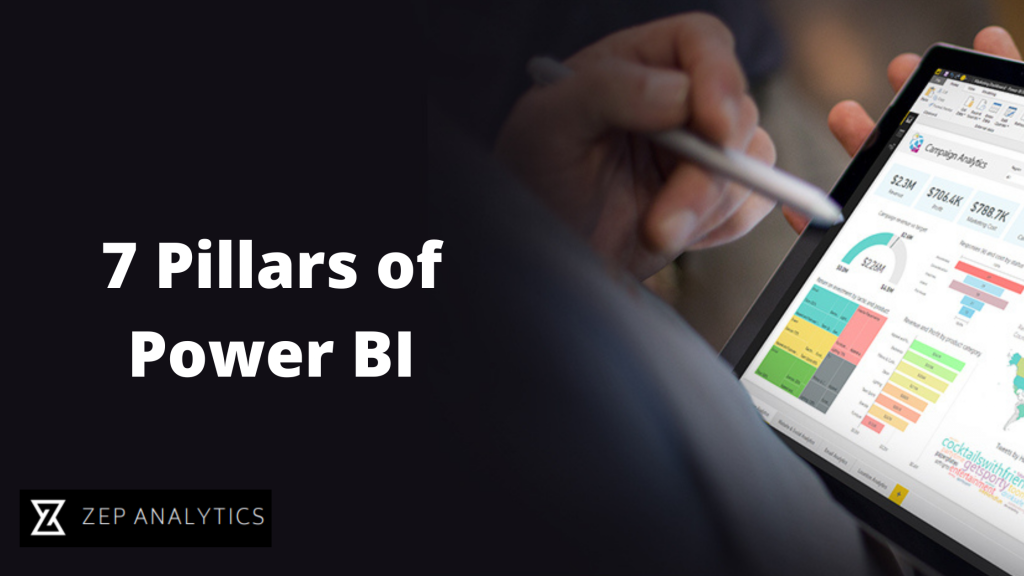Do you know 7 Pillars of Power BI
In the previous blog we did the introduction to Power BI and discussed architecture design behind Power BI. In this article we are going to discuss about some of the most important things which are required to start your Power BI journey effectively.
There are 7 steps that you have to remember while working with Power BI. I will call this 7 steps to follow as “The 7 Pillars of Power BI”.
7 Pillars of Power BI
Here is the diagram that shows the 7 Pillars of Power BI.
The 7 pillars are as follows:
- Extract
- Transform
- Modeling
- Calculations
- Visual
- Distribution
- Automation
Let’s discuss each of them now
Extract: This is the step where we get the information from the data set performed in Power BI Desktop. You can talk to any data source with ha highly simplified Power BI interface. Power BI can connect to any data source to bring meaningful insights to the end-user. It is simple to import any custom file into Power BI. Connecting data from multiple data sources can be achieved by anyone new to Power BI.
Transform: It is the second pillar where we can clean and treat the data. This is performed in Power Query Editor which is the part of Power BI Desktop Environment. After Data Loading, it should undergo pre-processing according to the requirements. This process is called Data shaping or Data Transformation. It involved various steps like renaming tables and columns, changing the data type, modifying rows and columns, appending, merging, etc.
Modeling: Third Pillar where we can create relationships between the data tables and is done using Power BI Desktop. Here we enhance the data to get more accurate insights and analytics. This is achieved by creating relationships and hierarchies between various data tables for better analysis.
Calculations: This is the Fourth Pillar where we can create various measures using DAX language analysis. DAX is also known as “Data Analysis Expressions”. It is achieved by creating several measures and calculated columns. Even M Language is used for various purposes, especially for Data and Time operations.
Visuals: This is the Fifth Pillar where we can create the storytelling and present the information and insights through various visualizations using Power BI. Visualizations is the heart of Power BI. We can play with a variety of visualizations, right from in-built visualizations to custom visualizations. Power BI is the Pechora of visual tools and custom visuals. Business users acquire good analytical insights without writing a single line of code.
Distributions: This is the Sixth Pillar where we share the reports created to end-users, stakeholders, and customers through Power BI cloud platforms. To achieve this distribution Power BI service where you can make changes in the report and share reports with anyone.
Automation: This is the Seventh Pillar where we update the dataset automatically, this is being performed on Power BI cloud platforms. Automating the data and further refreshing the data takes place in this automation process of Power BI, this is achieved using Power BI Service.
So here are the most important 7 pillars or 7 steps you have to keep in mind while performing any Power BI project.
From the next blog, we will start the Power BI Installation and Setup followed by the main concepts of Power BI.
Happy Learning!!
- ZA Admin
- Sep, 19 2022

